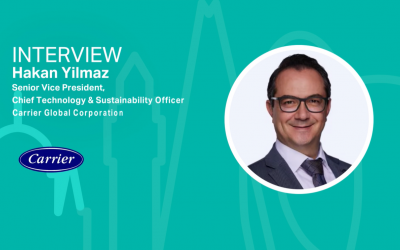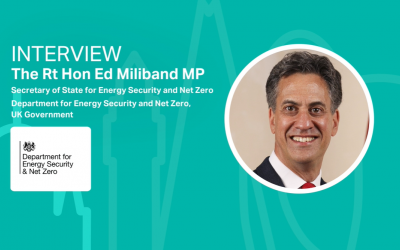Mario Nava discusses establishing a green taxonomy in the EU
Ahead of the Sustainable Investment Forum Europe taking place in Paris on the 12th March 2019, we caught up with Mario Nava, Director, DG FISMA from the European Commission, to discuss establishing a green taxonomy in the EU.

Ahead of the Sustainable Investment Forum Europe taking place in Paris on the 12th March 2019, we caught up with Mario Nava, Director, DG FISMA from the European Commission, to discuss establishing a green taxonomy in the EU.
The ongoing work to implement the recommendations by the high-level expert group on sustainable finance in the EU is closely followed by the investor community. Can you describe briefly the progress made so far and what the next major steps are?
One year ago the Commission presented its Action Plan on Financing Sustainable Growth consisting of ten ambitious legislative and non-legislative measures to mobilise finance for sustainable investments and sustainable growth. The first legislative proposals were tabled in May 2018, including a proposal on the framework of an EU-wide classification system; a proposal on the disclosure of sustainability risks by institutional investors and asset managers; and a proposal on establishing low-carbon benchmarks. Thanks to the quick work by the European Parliament and the Council, a political agreement was reached on the two latter legislative proposals, while we are working at full speed on the taxonomy proposal (and the European Parliament is expected to vote on the proposal on 11 March).
At the same time progress on technical work has been enormous. In June 2018 the Commission has established a Technical Expert Group that already delivered reports for consultation on the taxonomy's first economic activities, and climate-related disclosures.
On 21 March 2019 the Commission will host a sustainable finance conference in Brussels that will emphasize the need to coordinate sustainable finance efforts and initiatives across the globe.
Right now work is underway to establish a green taxonomy in the EU. Why is this important and how will this impact investors?
The EU taxonomy will be a classification system that will define what is ‘green’ in order to identify sectors and projects where investment can make the biggest impact. This unified EU taxonomy focuses on environmentally sustainable activities starting in the area of climate change mitigation, followed by climate change adaptation and other environmental fields.
The Taxonomy, once complete, will help us develop labels for green financial products or funds. It will also underpin disclosure and reporting of financial institutions and companies on climate and environmental activities or risks.
The EU taxonomy will provide clarity and transparency on environmental sustainability to investors, financial institutions, companies and users thereby enabling informed decision-making in order to foster investments in environmentally sustainably activities.
In addition to the EU sustainable finance agenda, what other EU initiatives should investors who want to support the transition to a low-carbon sustainable economy be aware of?
Europe is committed to the implementation of the Paris Agreement so it is leading the way. The European Commission has proposed that the EU should devote a quarter of its budget for the period of 2021-2017 to climate related action. This would make up €320bn over a seven year period.
Moreover, the Commission proposed on 28 November 2018 its strategy for a climate-neutral economy by 2050. This strategy shows how Europe can lead the way to climate neutrality, by approaching this investment challenge as an economic opportunity.
You are delivering a keynote speech at our upcoming Sustainable Investment Forum Europe in Paris on 12 March. Can you share with us one or two things that you want to tell our investor audience at the event?
Making Europe's economy more sustainable and contributing to sustainable development globally means undertaking huge investments to improve, innovate, and become more efficient and competitive. This is an immense opportunity for both public and private sectors, and transparency is very important.
As mentioned before, beyond the EU taxonomy proposal, we have also tabled two more legislative proposals. One proposal concerns the disclosure requirements of asset managers, institutional investors, and financial advisors. While the number of investment managers that consider sustainability is increasing, it is increasing fast enough. Our proposal will require them to disclose how they integrate sustainability considerations into their processes. To better inform retail investors, we will also require investment and insurance advisors to ask clients about their sustainability preferences, and offer suitable investment products.
The other proposal is about giving investors the tools to measure the carbon footprint of an investment strategy using financial benchmarks. In particular, we have proposed to define standards for low-carbon benchmarks, and for benchmarks with a positive carbon impact. These benchmarks will help investors replicate a low-carbon portfolio, or measure the performance of their own low-carbon investment strategy.
I am pleased to announce that a political agreement between the co-legislators was achieved during the last two weeks.
Mario Nava is a speaker at the Sustainable Investment Forum Europe, taking place on the 12th March 2019 in Paris. Find out more here.






